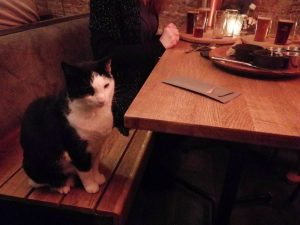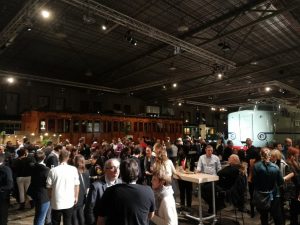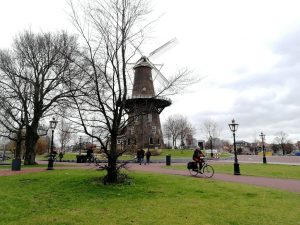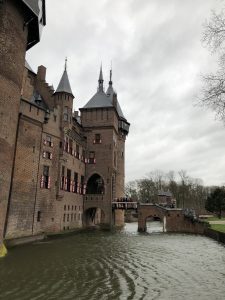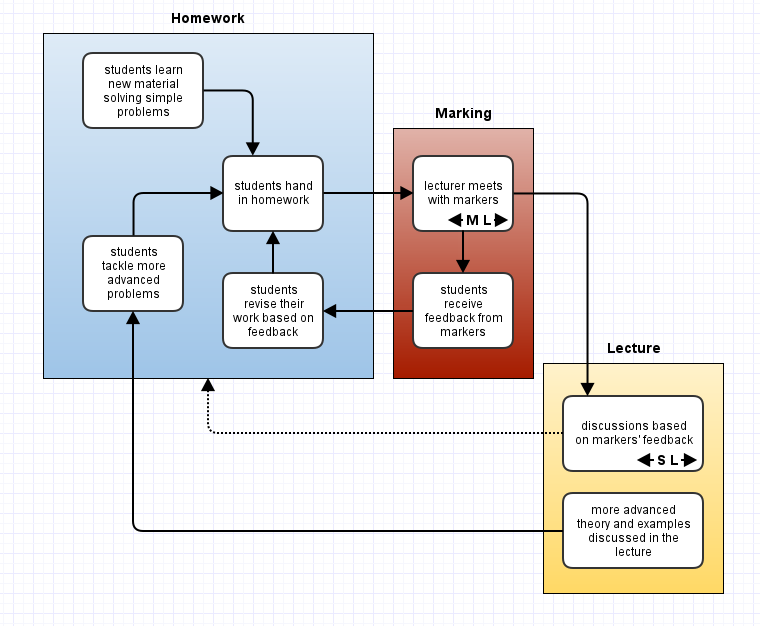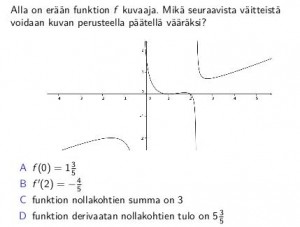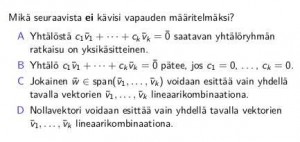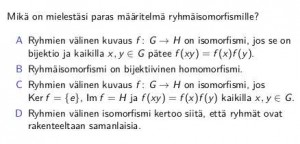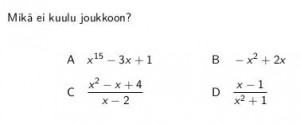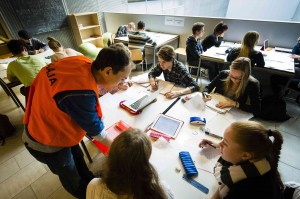”Tämä oli minulle normaalia matematiikan suorittamista huomattavasti motivoivampaa”
Kurssille Johdatus yliopistomatematiikkaan suunniteltiin keväällä 2018 kokonaan uusi arviointitapa. Kyseessä on matemaattisten tieteiden kandiohjelman ensimmäisen syksyn tai kevään 5 opintopisteen kurssi, jolla opitaan matemaattista ajattelua ja viestintää sekä perusasioita joukoista, kuvauksista ja muista tutkimusmatematiikan peruskäsitteistä. Kurssilla oli ollut käytössä väli- ja loppukoe, joihin sai lisäpisteitä laskuharjoituksista. Olimme uuden luennoitsijan, Mikko Stenlundin kanssa kuitenkin sitä mieltä, että tenttiarviointi ei oikein sovellu tälle kurssille. Tenttiarviointi nimittäin ohjaa opiskelijoita työskentelemään loppupainotteisesti ja pänttäämään ”tärppejä”, jotka helposti unohtuvat tentin jälkeen.
Kurssi on suurimmalle osalle opiskelijoita ensimmäinen matematiikan kurssi. Siksi halusimme alusta alkaen motivoida opiskelijat säännölliseen viikoittaiseen työskentelyyn. Toisaalta kurssilla opitaan asioita lähinnä tulevaa matematiikan opiskelua varten, joten emme halunneet, että opiskelijat opiskelevat asiat tenttiä varten ja unohtavat ne heti sen jälkeen. Lisäksi kurssille haluttiin lisätä itse- ja vertaisarviointia, koska nämä tukevat tutkimusten mukaan opiskelijoiden pystyvyyden kokemusta, hyviä opiskelustrategioita ja elinikäistä oppimista.
Kurssilla on hyvin heterogeeninen osallistujajoukko. Alla olevassa kaaviossa näkyy syksyn 2018 kurssin suorittaneiden jakauma eri koulutusohjelmiin. (Vanhoissa koulutusohjelmissa opiskelevat on kaaviossa pyritty yhdistämään vastaavaan uuteen koulutusohjelmaan.)
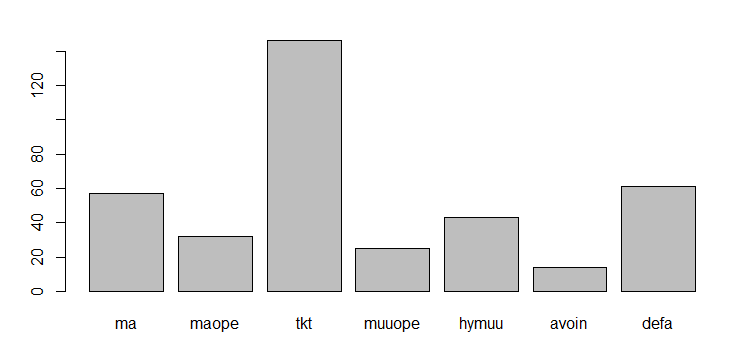
Syksyllä 2018 kurssin suorittaneiden jako eri koulutusohjelmiin (ma = matemaattisten tieteiden kandiohjelma, maope = matematiikan, fysiikan ja kemian opettajan kandiohjelma, tkt = tietojenkäsittelytieteen kandiohjelma, muuope = muu Helsingin yliopiston opettajaohjelma, hymuu = muu Helsingin yliopiston tutkinto-ohjelma, avoin = Avoimen yliopiston kautta suorittava, defa = Digital Education For All -hankkeen kautta suorittava)
Suunnittelimme Mikon kanssa uuden arvioinnin, jossa ei ole lainkaan tenttiä, vaan arvosana perustuu suoraan erilaisista tehtävistä saataviin pisteisiin. (Arvioinnin toteuttamiseen osallistui myös kurssin toinen luennoitsija Timo Hänninen.) Kurssilla on käytössä Tehostetun kisällioppimisen menetelmä, jossa uusia asioita opiskellaan tehtävien avulla. Osa tehtävistä arvioidaan opettajien toimesta tai automaattisesti, ja osassa tehtäviä pisteitä saa pelkästä yrittämisestä.
Oheisessa taulukossa näkyy erilaisten tehtävien painotus arvosanassa. Viikkotehtävillä on hyvin suuri painoarvo. Suurin osa pisteistä tulee tehtävän laadun perusteella, mutta myös pelkällä tekemisellä on merkittävä rooli. Laadun perusteella arvioitavista tehtävistä saa palautetta joko opettajalta tai tietokoneelta, ja näitä saa palautteen jälkeen korjata ja palauttaa uudestaan.
| Tehtävätyyppi | suorituksen laatu |
yrittäminen |
| Viikoittaiset harjoitustehtävät | 45 % | 25 % |
| Itsearviointiharjoitukset | – | 10 % |
| Kurssin lopun laaja tehtävä | 15 % | – |
| Puolenvälin laajan tehtävän vertaisarviointi | 5 % | – |
Kokonaan uutta kurssilla oli projektityyppinen lopputyö, joka nimettiin ”laajaksi harjoitustehtäväksi” kurssilla Algebra II tehtävän vastaavan työn mukaan. Lopputyössä opiskelijoille annetaan osaksi tai kokonaan uusi matemaattinen käsite, johon heidän on tutustuttava. Työssä opiskelijoita pyydetään muun muassa laatimaan uudelle käsitteelle matemaattinen määritelmä sekä lukemaan ja kirjoittamaan yksinkertaisia todistuksia käsitteeseen liittyen. Käsitettä on tyypillisesti myös kuvailtava omin sanoin ja piirroksin. Lopputyötä harjoitellaan kurssin puolessa välissä. Lopputyöstä saa ennen lopullista palautusta vertaispalautetta toisilta kurssilaisilta, ja lopullisen version tarkistavat ja pisteyttävät kurssin opettajat.
Syksyllä 2018 kerätyssä kurssipalautteessa kysyttiin uuteen arviointimenetelmään liittyviä kysymyksiä. Oheisesta taulukosta ja kaaviosta näkyy opiskelijoiden vastausten jakauma Likert 1–7 -asteikkoisiin kysymyksiin (1 = olen täysin eri mieltä, 7 = olen täysin samaa mieltä; n = 286). Erityisesti olimme iloisia, että opiskelijat kokivat vahvasti voivansa hyödyntää oppimaansa tulevilla kursseilla ja että he haluaisivat osallistua samalla tavalla suoritettavalle kurssille uudestaan.
| Kysymys | keskiarvo | keskihajonta |
| Pystyin näyttämään osaamiseni kurssilla ja sain siitä tunnustusta | 4,92 | 1,45 |
| Koen voivani hyödyntää oppimiani asioita tulevilla kursseilla | 5,69 | 1,37 |
| Haluaisin osallistua tällä tavalla suoritettavalle kurssille uudestaan | 5,73 | 1,50 |

Vastausten lukumääriä Likert-asteikkoisiin palautekysymyksiin (vihreä = ”Pystyin näyttämään osaamiseni ja sain siitä tunnustusta”, punainen = ”Koen voivani hyödyntää oppimiani asioita muilla kursseilla”, sininen = ”Haluaisin osallistua tällä tavalla suoritettavalle kurssille uudestaan”)
Numeeristen vastausten lisäksi opiskelijat vastasivat avoimeen kysymykseen ”Mitä mieltä olet kurssin suoritusmenetelmästä?” Vastaukset olivat lähes poikkeuksetta positiivisia: 286 vastauksen joukossa oli vain seitsemän kriittistä vastausta (2,4%).
Vastauksia analysoitiin aineistolähtöisellä laadullisella sisällönanalyysillä, jotta saataisiin selville, mitä hyötyä opiskelijat kokevat saavansa uudesta arviointimenetelmästä. Vastaukset voitiin ryhmitellä kolmeen kategoriaan.
- Suurimmassa kategoriassa opiskelijat korostivat, että arviointimenetelmä motivoi työskentelemään jatkuvasti koko kurssin ajan. He sanoivat tällaisen jatkuvan työskentelyn tukevan heidän oppimistaan, ja lisäksi tukevan hyvää työskentelyrutiinia.
- Toiseksi suurimmassa kategoriassa kehuttiin kurssin kokeettomuutta. Vastaajien mukaan se vähentää stressiä ja kannustaa keskittymään pänttäämisen sijaan asioiden opiskeluun ja omaan oppimiseen.
- Kolmannessa kategoriassa viitattiin siihen, että pisteiden jatkuva kertyminen antaa paremman kuvan osaamisesta kuin yksittäinen tentti.
Ohessa joitakin kuvaavia sitaatteja opiskelijoiden vastauksista.
”Pidin siitä, että kurssi kannusti tekemään tehtäviä jatkuvasti, jolloin oppiminen oli palkitsevampaa ja paremmin mieleen jäävää, kuin jos esimerkiksi kurssi suoritettaisiin yhdellä tai useammalla kurssikokeella, joihin pitäisi valmistautua erikseen.”
”Tehtäviin eikä tenttiin painottava arviointi kannustaa opiskelemaan itseä, ei tenttiä varten.”
”Tämä oli minulle normaalia matematiikan suorittamista huomattavasti motivoivampaa. Aikasemmat kokemukseni ovat lukio- ja amk-matikasta, missä oksennetaan useiden kuukausien työ yhdelle tenttipaperille […] Aiemmin on ollut hirveä kammo tätä oppiainetta kohtaan, ja lähdinkin mukaan haastamaan itseäni. Yllätys oli iso kun tajusin, että konkreettisesti kaikki työ mitä jaksan tehtäviin laittaa, näkyy kurssin loppuarviossa.”
Joissakin palautteissa esiintyi kuitenkin myös kritiikkiä kokeettomuutta kohtaan:
”Minusta tässä uudessa systeemissä että loppukoetta ei ole ja kurssinumero tulee vain sen perusteella miten hyvin suoriutuu laskuharjoituksista […] on se ongelma että tässä arvosana kertoo sen miten hyvin asian on osannut silloin kun sitä on vasta opetellut, eikä sitä miten hyvin asian osaa kurssin jälkeen […] Tämän takia loppukoe antaisi minusta paremman arvion siitä miten hyvin opiskelija osaa kurssin asiat.”
Yleisesti ottaen opiskelijapalautteessa esiintyi sekä kehuja että kritiikkiä, joka otetaankin huomioon seuraavissa toteutuksissa. Esimerkiksi tehtäviä koettiin olevan liian paljon opintopistemäärään nähden, ja osa opiskelijoista koki laajat harjoitustehtävät ahdistaviksi, koska ne olivat niin avoimia ja soveltavia. Tehtävämäärää pyritään jatkossa vähentämään, ja laajoja harjoitustehtäviä ohjeistamaan paremmin, jotta ne eivät säikäytä opiskelijoita.
Positiivisena huomiona on lopuksi todettava, että palautteen mukaan kurssi on lisännyt monien opiskelijoiden kiinnostusta matematiikkaa kohtaan. Osa opiskelijoista on sanonut haluavansa kurssin myötä ottaa lisää matematiikan kursseja tai ottavansa matematiikan sivu- tai jopa pääaineeksi. Kaiken kaikkiaan kurssia ja sen suoritusmenetelmää on pidettävä onnistuneena, ja sen kehittämiseen edelleen kannattaa panostaa!
”Kiitoksia erinomaisesta kurssista! Kurssi herätti itselläni syvällisemmän mielenkiinnon matematiikkaa kohtaan, jossa aiemmin en ole kokenut olevani erityisen hyvä. Tämä toimi mielestäni hyvänä esimerkkinä miksi valita Helsingin Yliopisto kaikista vaihtoehdoista. Toivottavasti vastaavia kurssimuotoja on saatavilla aineopinnoissakin!”
Tässä kirjoituksessa esitetyt uutta arviointimenetelmää koskevat tulokset esiteltiin ensimmäistä kertaa Pedaforum 2019 -konferenssissa Kumpulan kampuksella 6.6.2019.

